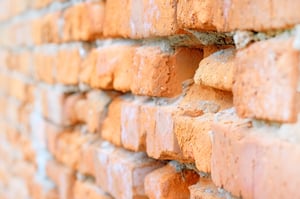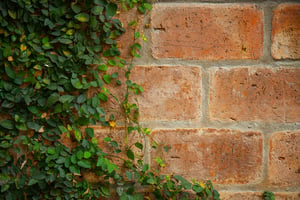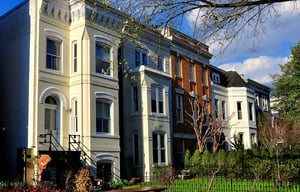What is Tuckpointing?
Tuckpointing – sometimes called “repointing” – describes the restoration of historic brick buildings by removing mortar between masonry joints and replacing it with lime-based mortar. This term applies to brick restoration on both building facades and chimneys.When done correctly, tuckpointing will ensure the structural integrity, longevity, and value of buildings constructed of brick during the 18th, 19th, and early 20th centuries. Lime, a stone used in construction for centuries, is the core ingredient in historic mortar. Its composition, texture, and strength – or level of hardness – are entirely different than cement or concrete, which are modern building materials suited for new construction. If a historic building is not tuckpointed correctly, it will eventually show signs of structural damage and interior water penetration.
What is Spot Tuckpointing?
Spot tuckpointing is the process of repointing on a smaller scale. It involves addressing only the major open holes and settling cracks in an otherwise solid wall. Fundamentally it's just plugging up holes to stave off rapid deterioration. Many homeowners and some building professionals consider it a shortcut to repair and restoration of brick facades that need extensive tuckpointing. This sounds like a reasonable repair, primarily because it is quick and may be inexpensive. But it merely a band-aid approach that will neither stabilize a building nor halt its continued deterioration.
How Does Water Damage Brick?
Brick and mortar are porous, not water resistant. If water penetrates and is subject to freeze-thaw cycles, deterioration will follow. Rain and frost are the enemies of the DC brick and masonry facades and will, given time, eventually reduce it to a pile of rubble. Homeowners who visually inspect the facades of their historic brick homes should look for: 
- A crumbling or flaking of the surface of their brickwork. This form of deterioration, known as spalling brick, usually results from some type of water damage.
- Sections that are coated with a white powdery substance. The technical name for this white powder is efflorescence. Although undesirable, efflorescence is usually not harmful to brick masonry. It is, however, an indication of the presence of excess water in the masonry, which can lead to more severe issues.
- During winter seasons ice and snow form on brick walkways and steps, presenting a challenge for homeowners. Alternatives to salt or other chemical de-icing products should be used to remove the ice and snow. The chemicals damage the bricks and degrade the mortar joints.





 Exterior
Exterior 